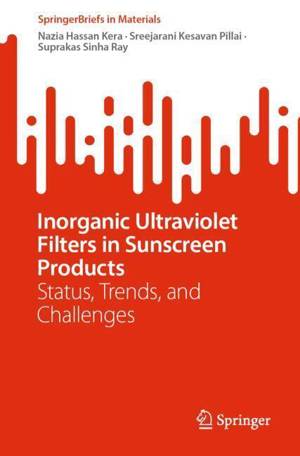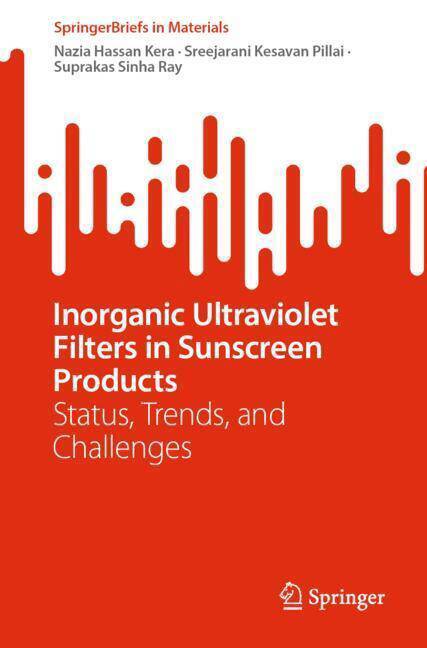
- Retrait gratuit dans votre magasin Club
- 7.000.000 titres dans notre catalogue
- Payer en toute sécurité
- Toujours un magasin près de chez vous
- Retrait gratuit dans votre magasin Club
- 7.000.0000 titres dans notre catalogue
- Payer en toute sécurité
- Toujours un magasin près de chez vous
Inorganic Ultraviolet Filters in Sunscreen Products
Status, Trends, and Challenges
Nazia Hassan Kera, Sreejarani Kesavan Pillai, Suprakas Sinha RayDescription
This book offers a comprehensive overview of recent developments in inorganic ultraviolet (UV) filters utilized for photoprotection applications. It evaluates the performance of the two approved inorganic UV filters for sunscreen use, titanium dioxide (TiO2) and zinc oxide (ZnO), examining their physicochemical properties in relation to various factors such as efficacy in UVR attenuation, formulation considerations including product aesthetics and stability, safety aspects, potential risks to human health, and their environmental fate and effects. The regulations governing the use of TiO2 and ZnO in sunscreens are also addressed.
Furthermore, the book assesses different modification strategies employed to mitigate the undesirable properties of ZnO and TiO2. It also presents various inorganic materials studied as alternatives to ZnO and TiO2, evaluating their potential for use as UV filters.
This book is tailored for chemists, material scientists, researchers, engineers (both chemical and biomedical), as well as undergraduate and postgraduate students interested in this dynamic research field. Additionally, it serves as a valuable resource for industrial researchers and R&D managers aiming to develop and market advanced inorganic UV filter-based sunscreen products.
Spécifications
Parties prenantes
- Auteur(s) :
- Editeur:
Contenu
- Nombre de pages :
- 84
- Langue:
- Anglais
- Collection :
Caractéristiques
- EAN:
- 9783031641138
- Date de parution :
- 15-07-24
- Format:
- Livre broché
- Format numérique:
- Trade paperback (VS)
- Dimensions :
- 156 mm x 234 mm
- Poids :
- 149 g

Les avis
Nous publions uniquement les avis qui respectent les conditions requises. Consultez nos conditions pour les avis.






